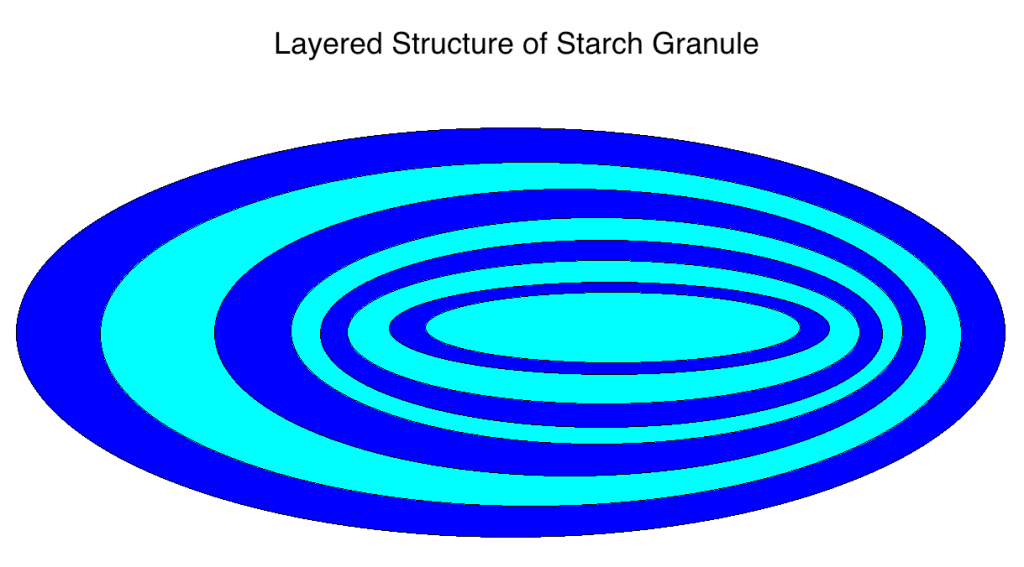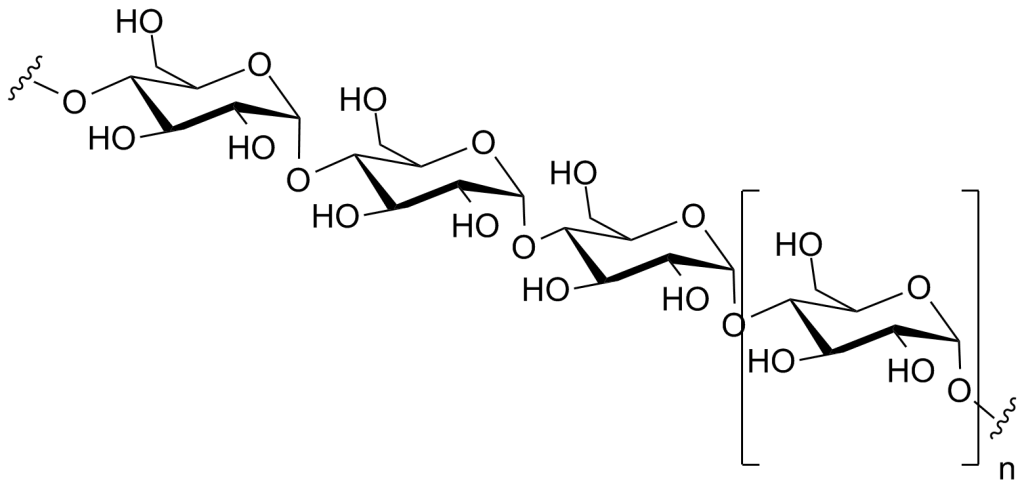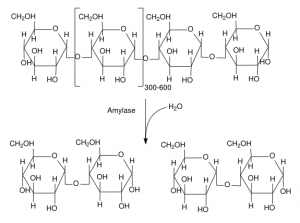
Starch granules contain alternating layers of less dense, amorphous starch (light blue) interspersed with more tightly packed, semi-crystalline regions of starch (dark blue). When exposed to water, the less dense regions swell, disrupting the internal structure of the granule.
Starch is composed of amylose and amylopectin. In barley malt, however, starch does not exist as a pure mixture of these two molecules, contained by the husk. Instead, Amylose and amylopectin are associated with other molecules, and packed into to tiny granules.



Recent Comments